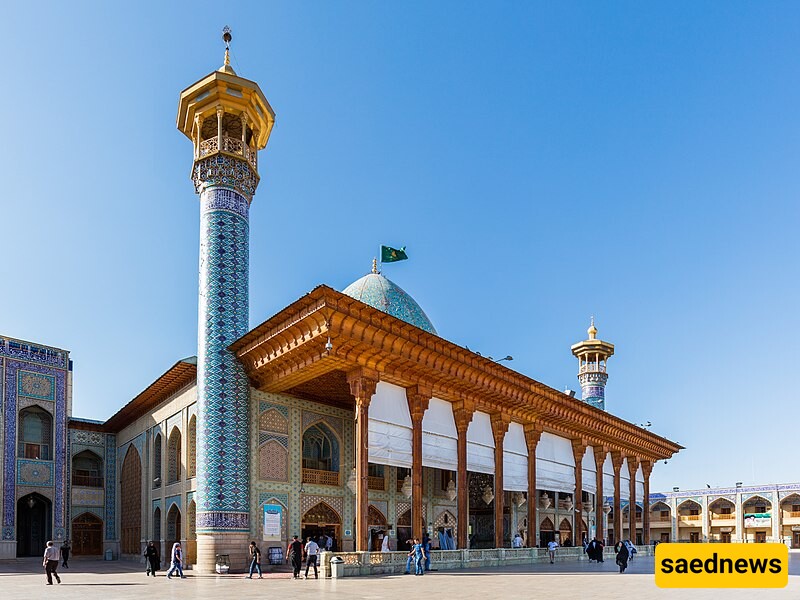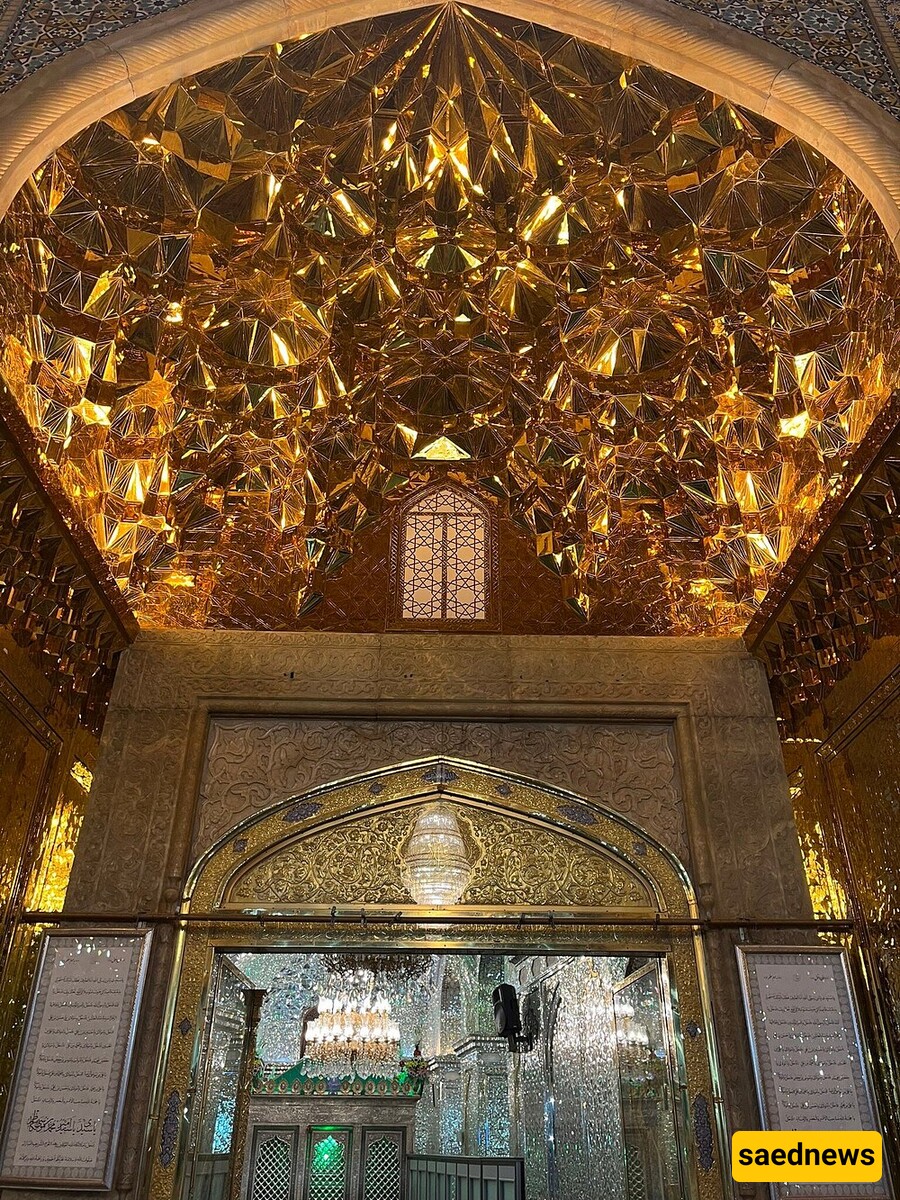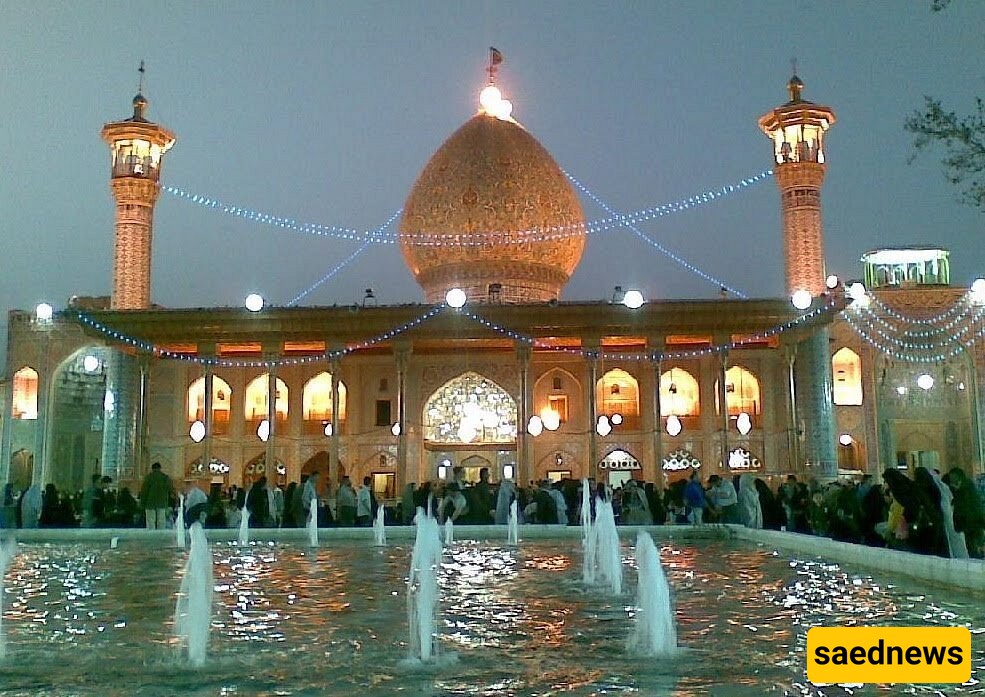SAEDNEWS: The Shah Cheragh Shrine in Shiraz, Iran, is not only a revered religious site but also a masterpiece of Islamic architecture. Known for its reflective glass interiors and intricate mosaics, the shrine draws visitors worldwide. This article delves into its history, cultural significance, and remarkable design elements.

According to SAEDNEWS, Shah Cheragh Shrine is among Iran’s most esteemed religious and cultural landmarks. Located in Shiraz, the heart of Persian culture, this stunning shrine serves as a mausoleum for Ahmad and Muhammad, the sons of Musa al-Kadhim, a revered Shiite Imam. Visitors flock here to honor the shrine's religious significance and marvel at its breathtaking architecture.
The Shah Cheragh Shrine dates back to the 12th century, with roots deeply entwined with Iran’s Islamic heritage. Originally established during the Buyid dynasty, the shrine has undergone extensive renovations over the centuries, notably during the Safavid and Qajar periods. Each era added distinct architectural touches, making it a unique fusion of styles that mirror Iran’s rich history.
One of the shrine's most iconic features is its mirrored interior, which creates a captivating play of light. Every surface inside the shrine is covered in small, glittering glass pieces arranged in intricate patterns. This mirror work, known as Ayineh Kari, is a traditional Iranian craft that symbolizes divine illumination. When sunlight enters, the space transforms, bathing visitors in a radiant glow—a reminder of the light of faith.
The dome and minarets of Shah Cheragh are notable for their grandeur and intricate tile work. The turquoise dome stands as a visual focal point, adorned with Persian calligraphy and floral patterns that pay homage to traditional Iranian design. The minarets, with their elaborate motifs, add symmetry to the structure, creating an imposing yet harmonious skyline that defines the Shiraz landscape.
The shrine’s tile work is a marvel of craftsmanship, showcasing a spectrum of colors, with deep blues and vibrant greens representing spirituality and life. The walls are adorned with verses from the Quran, meticulously inscribed in calligraphy that reflects the skill and devotion of artisans over centuries. Each tile and inscription tells a story, reflecting Iran's commitment to preserving its cultural heritage.

For the Shia Muslim community, Shah Cheragh is a revered pilgrimage site. The shrine’s sacred status, combined with its architectural allure, draws visitors from around the globe. Many pilgrims come seeking spiritual solace, praying for guidance and healing. This emotional connection reinforces Shah Cheragh’s standing as not just a structure but a symbol of faith and resilience.
Shah Cheragh embodies the artistic and cultural identity of Iran, representing the blending of religion and art in Persian society. Its preservation and upkeep underscore Iran’s dedication to maintaining its cultural symbols for future generations. The shrine's intricate artistry and reverent atmosphere remind Iranians and global visitors alike of the nation’s rich cultural legacy.
Shah Cheragh is more than a shrine—it is a cultural treasure, a testament to faith, and an architectural masterpiece. With its unique blend of artistry and spirituality, it continues to inspire visitors, connecting them to Iran’s historical and cultural roots. Whether admired for its religious significance or architectural beauty, Shah Cheragh stands as an enduring symbol of Persian heritage and a place of unity and reflection.


